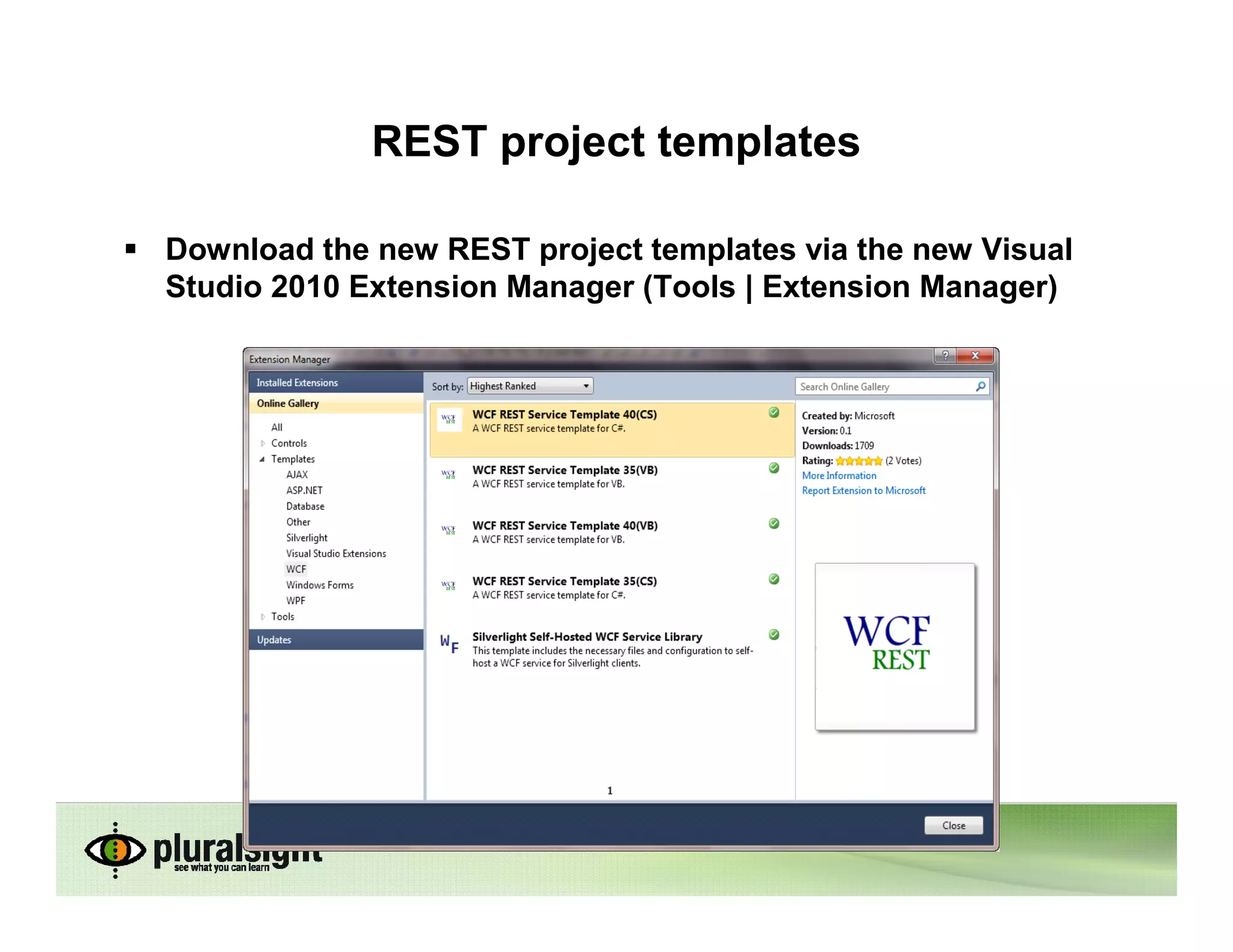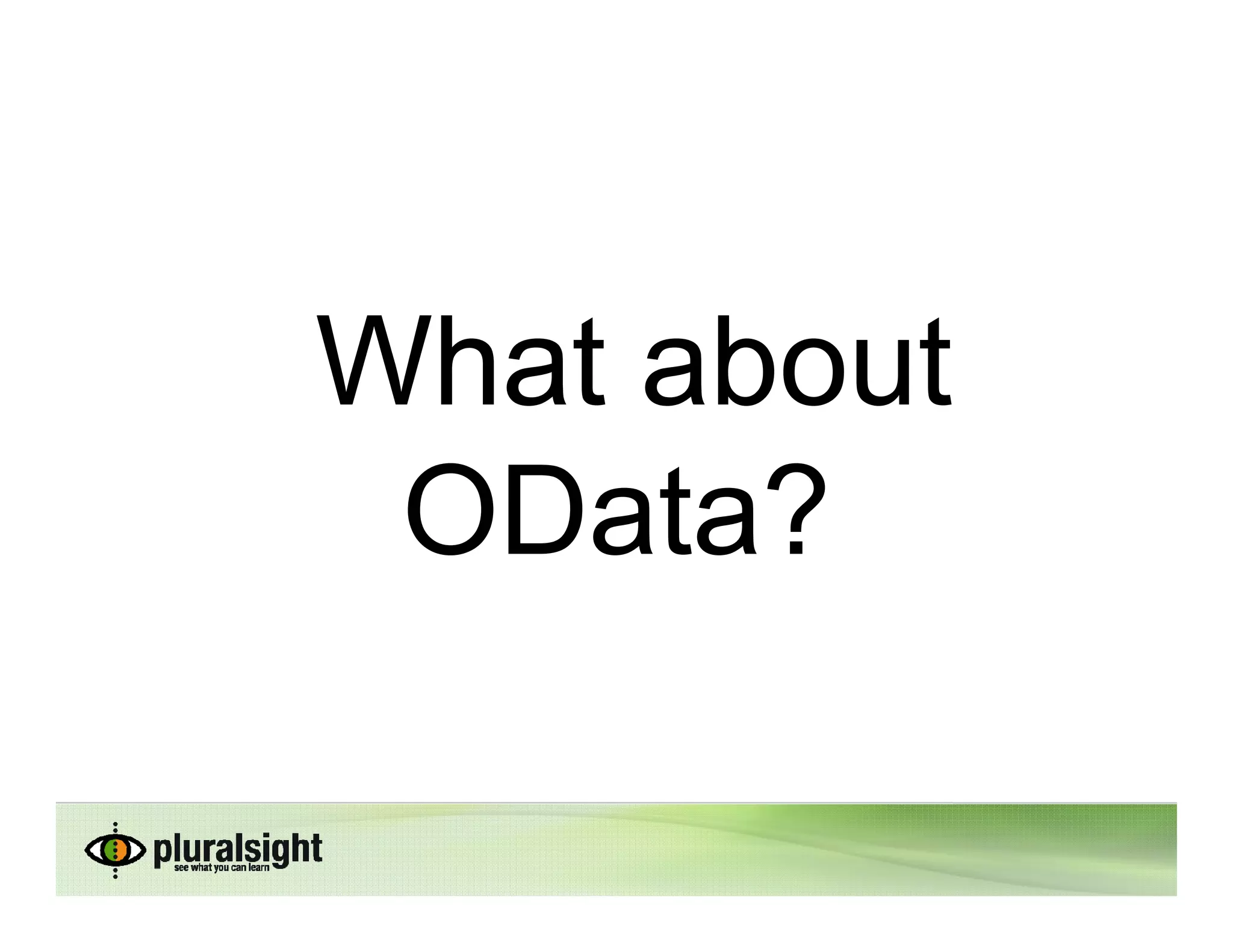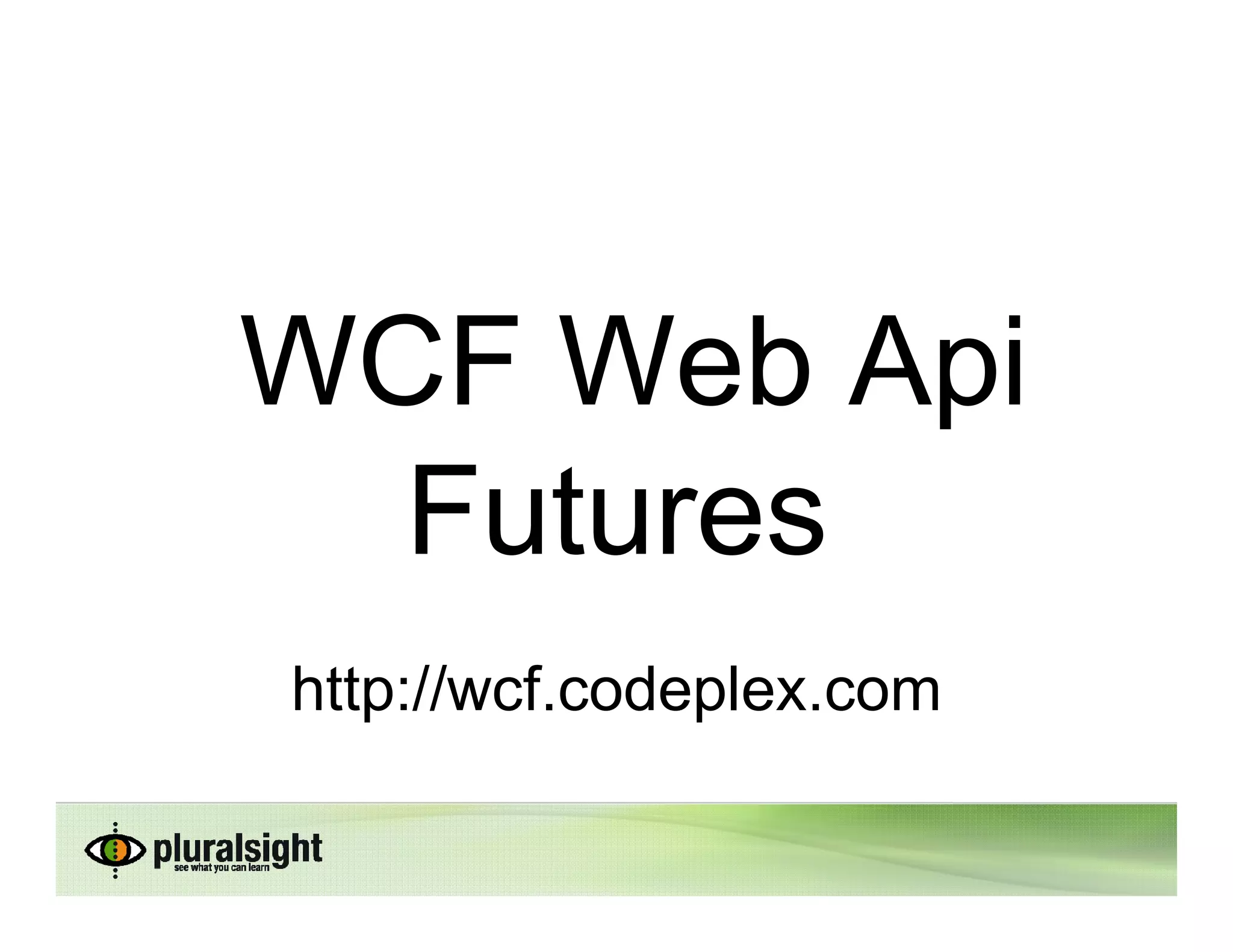The document provides an overview of building RESTful services with WCF, highlighting the simplicity and interoperability of REST compared to SOAP. It discusses how to configure WCF for REST using the web programming model and various attributes like WebGet and WebInvoke. Additionally, it touches on improvements in WCF 4.0, including automatic help pages and HTTP caching support.

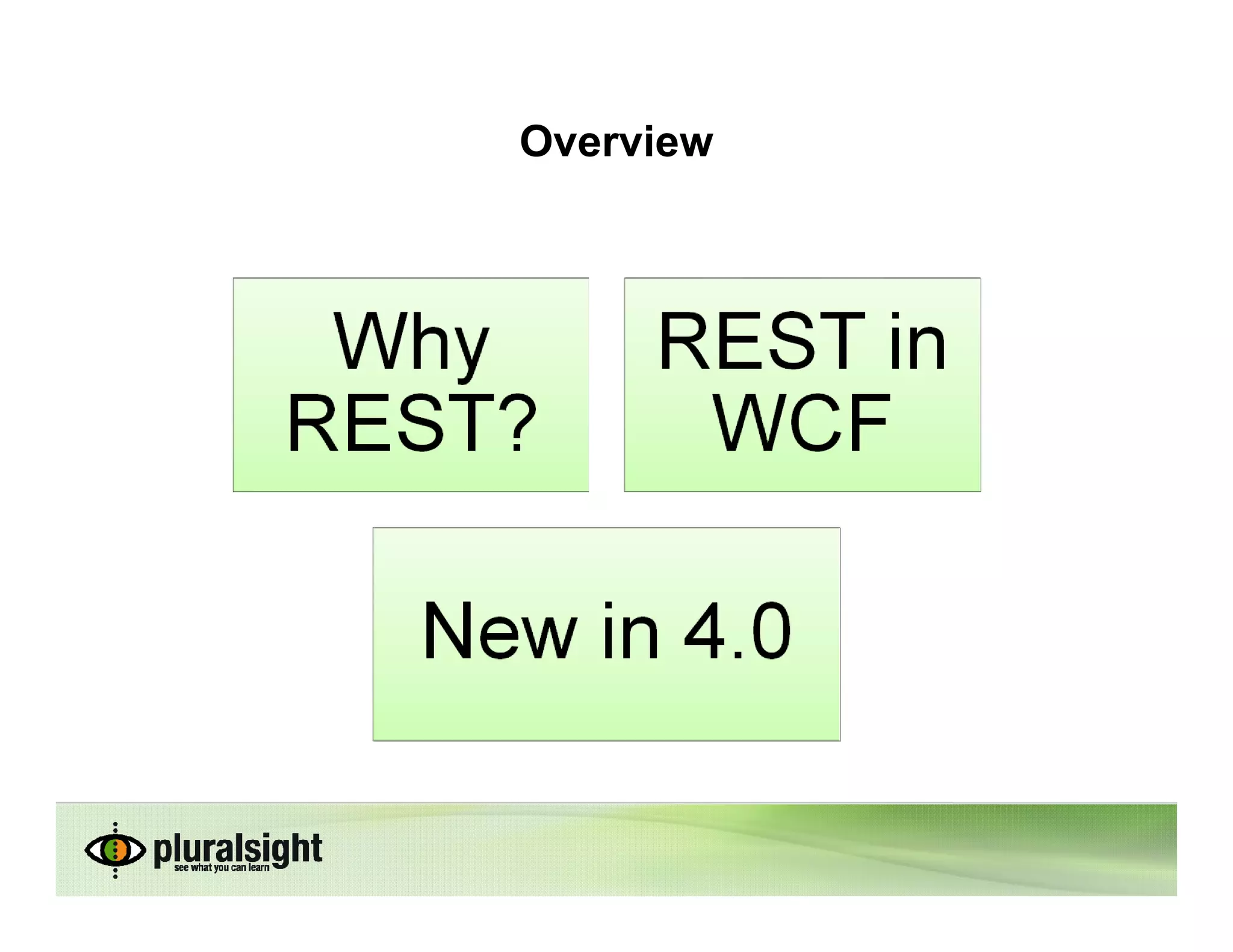
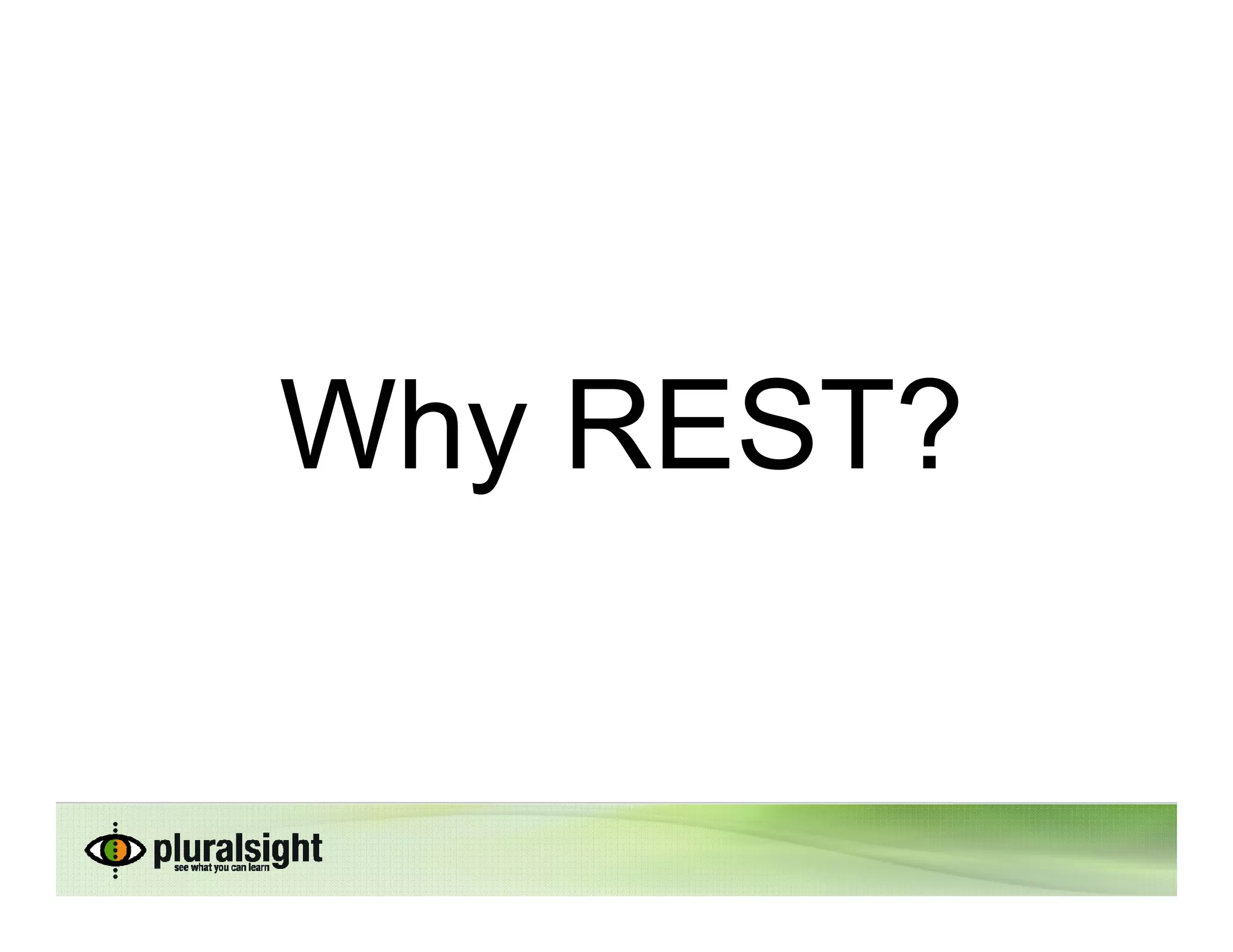
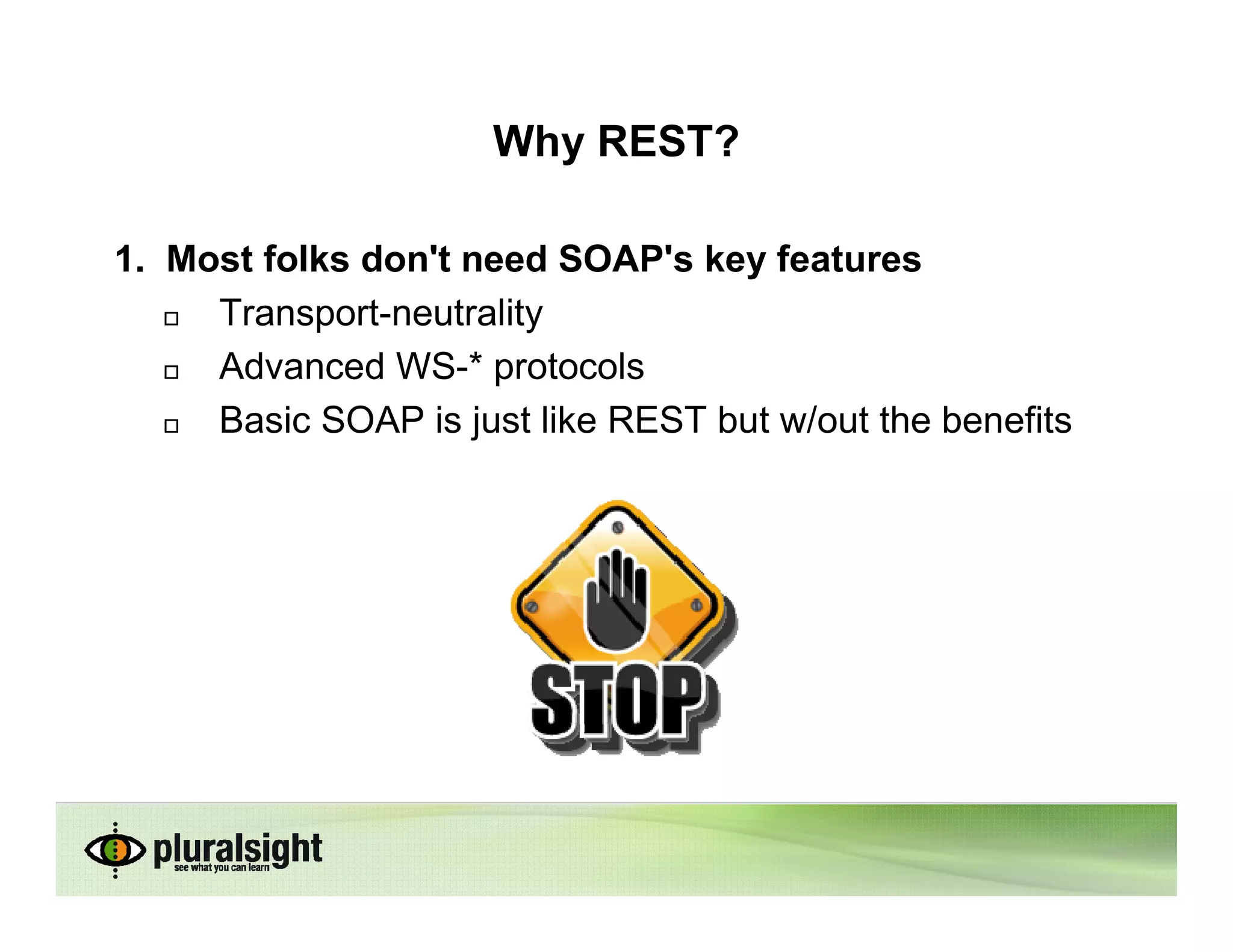
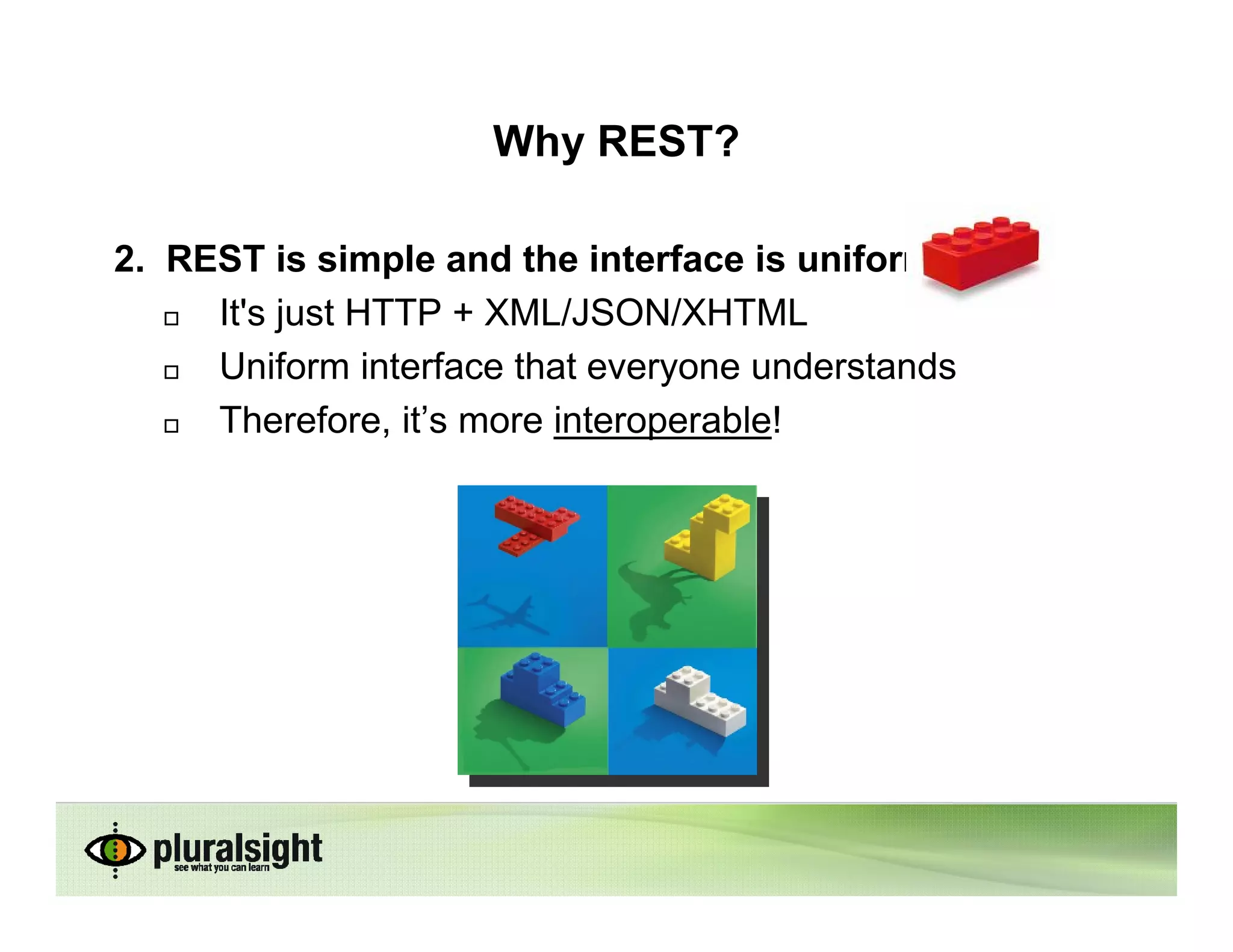
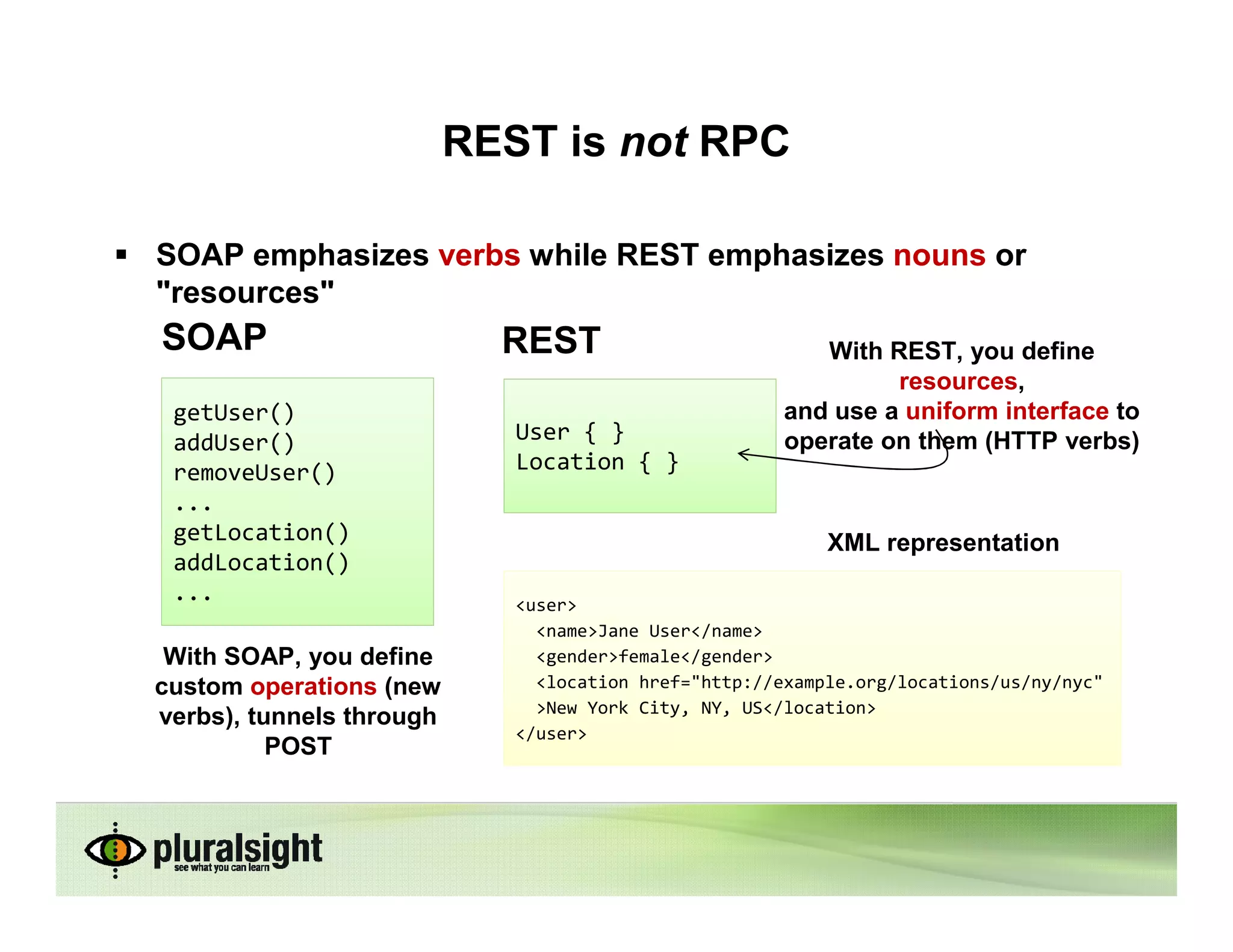
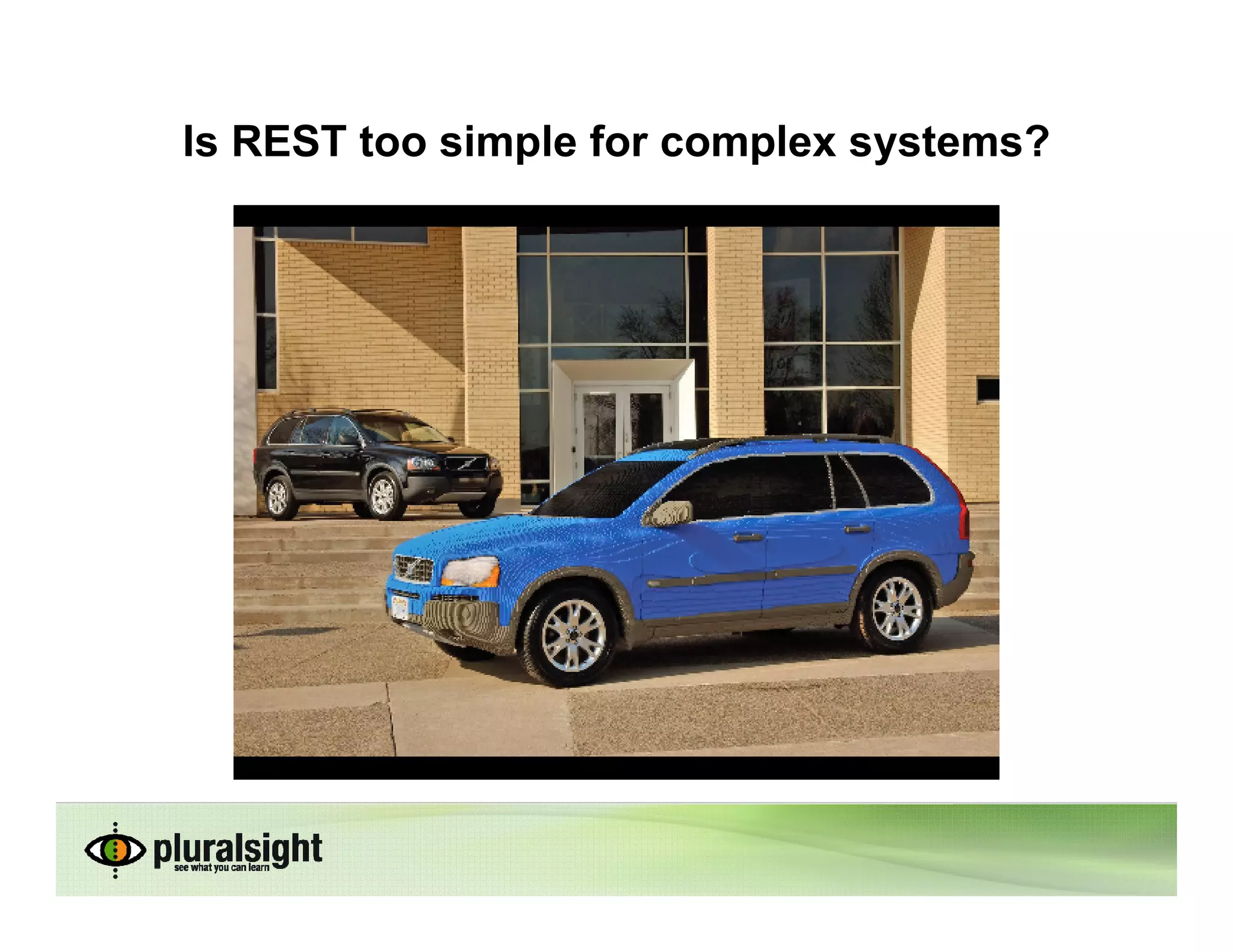
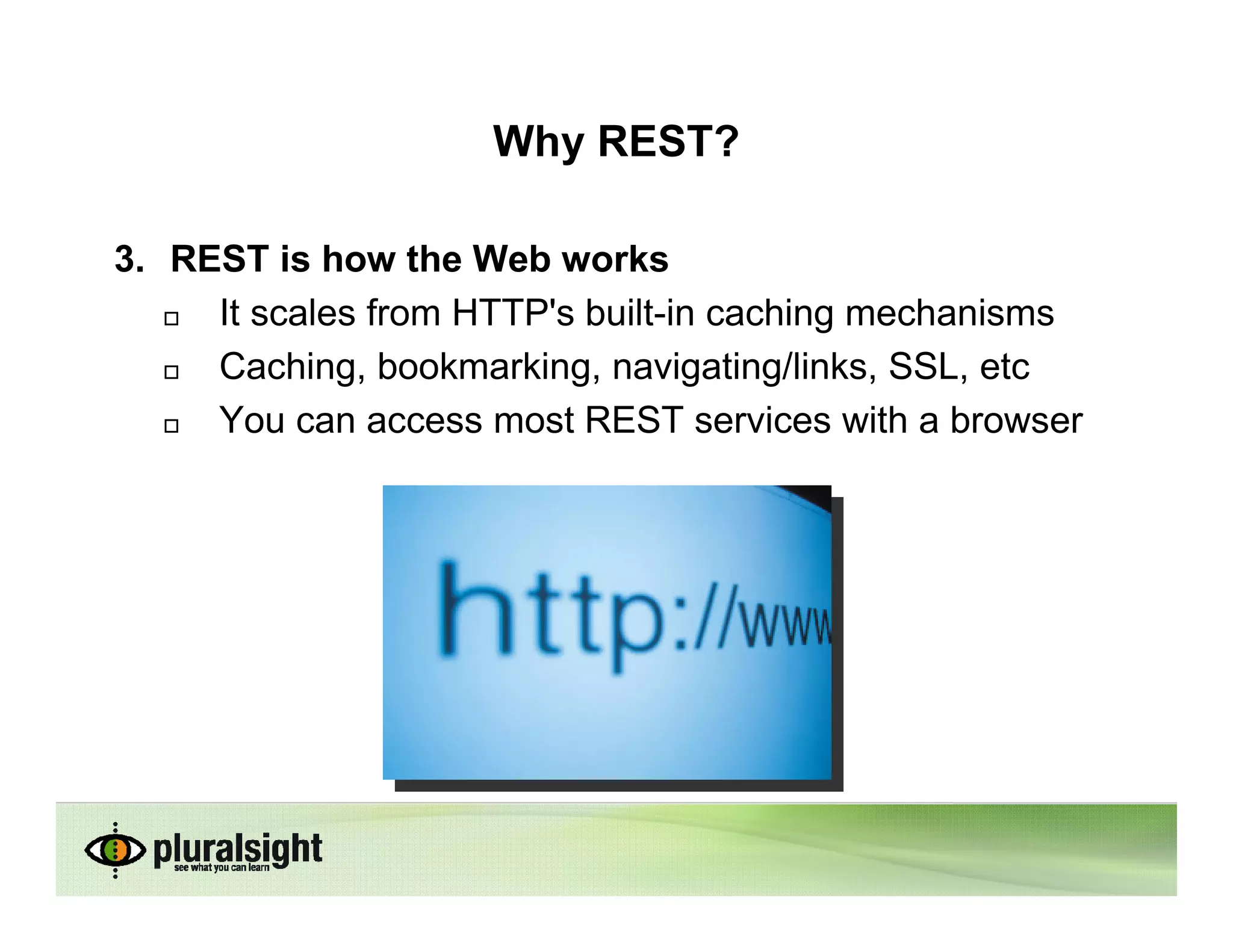
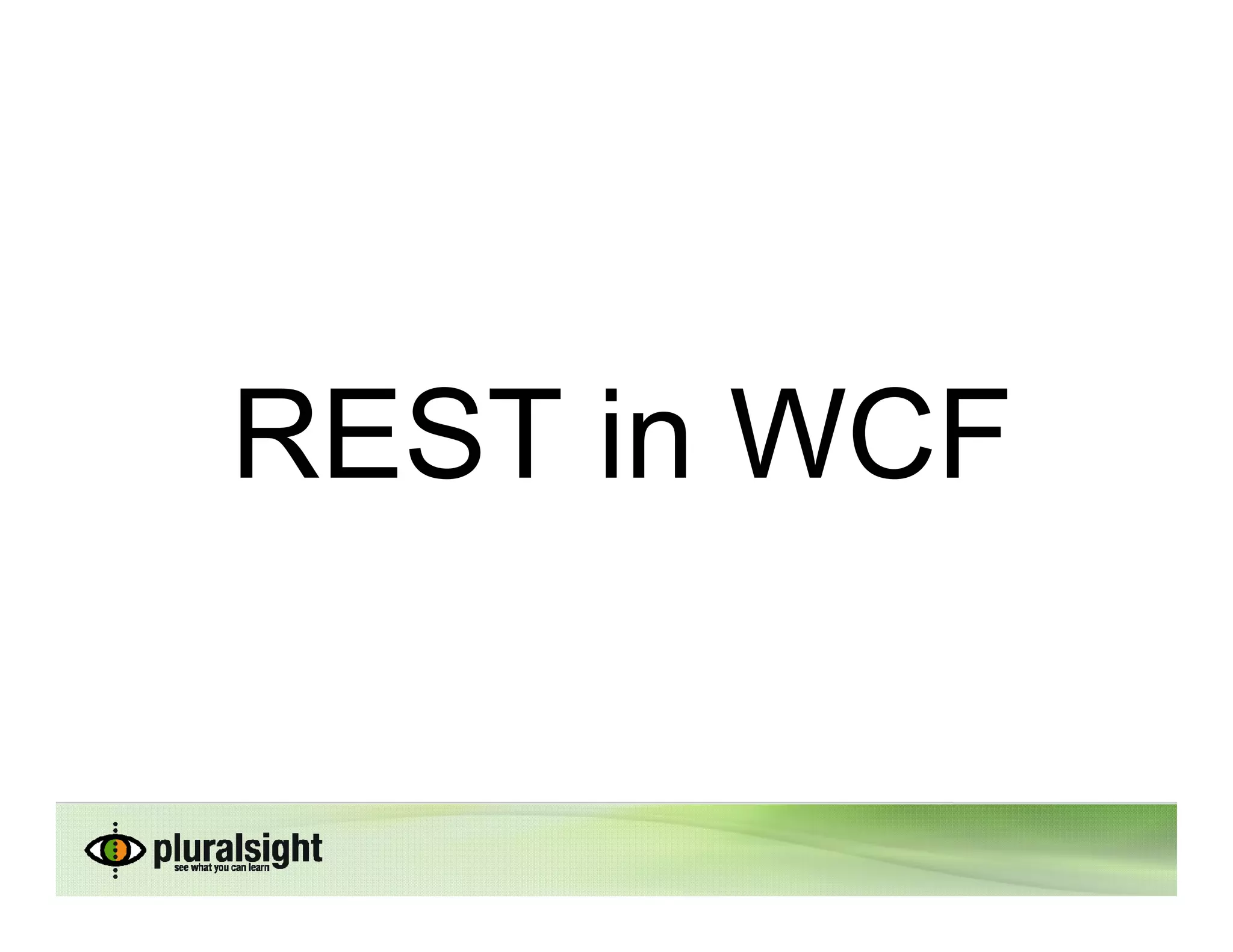
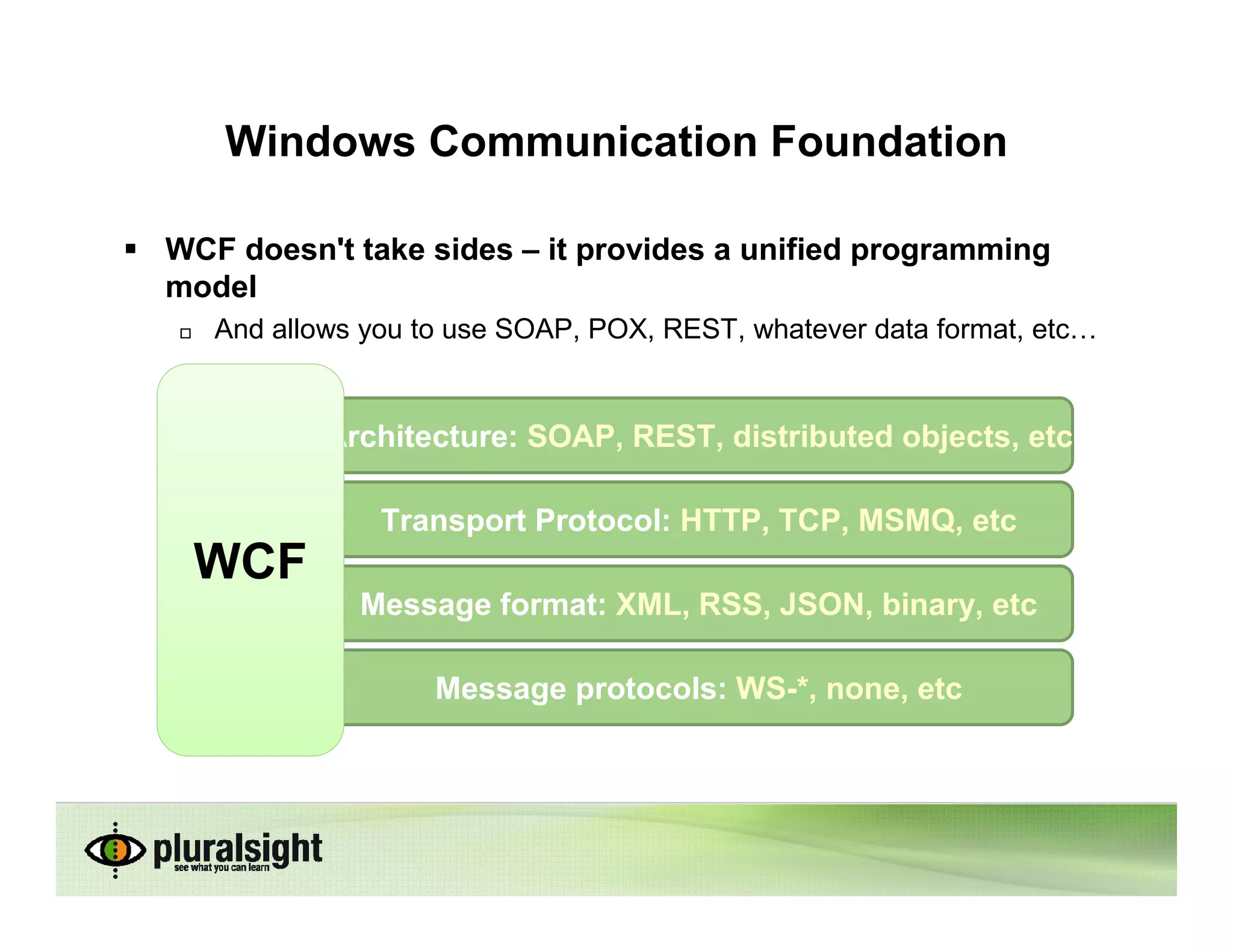
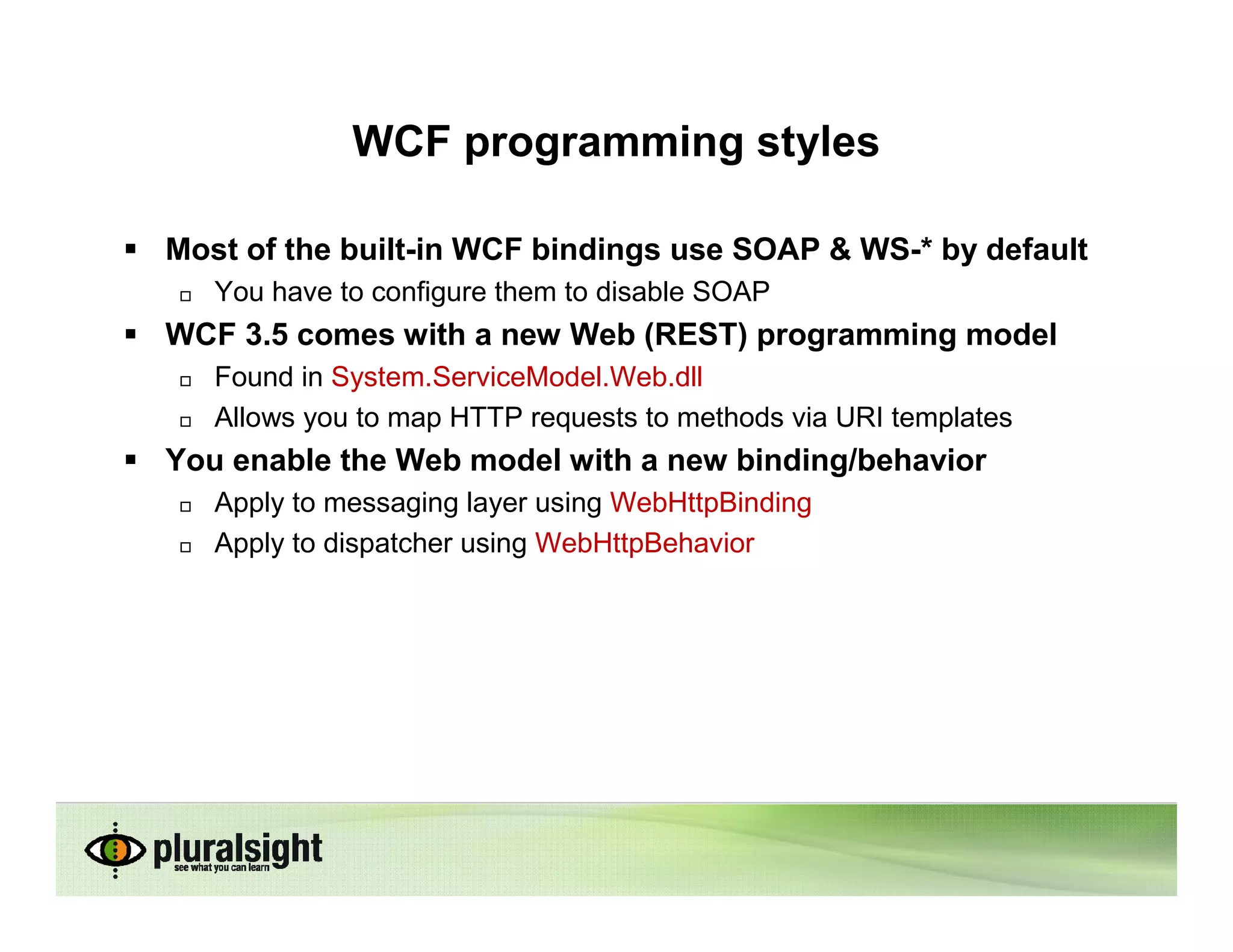
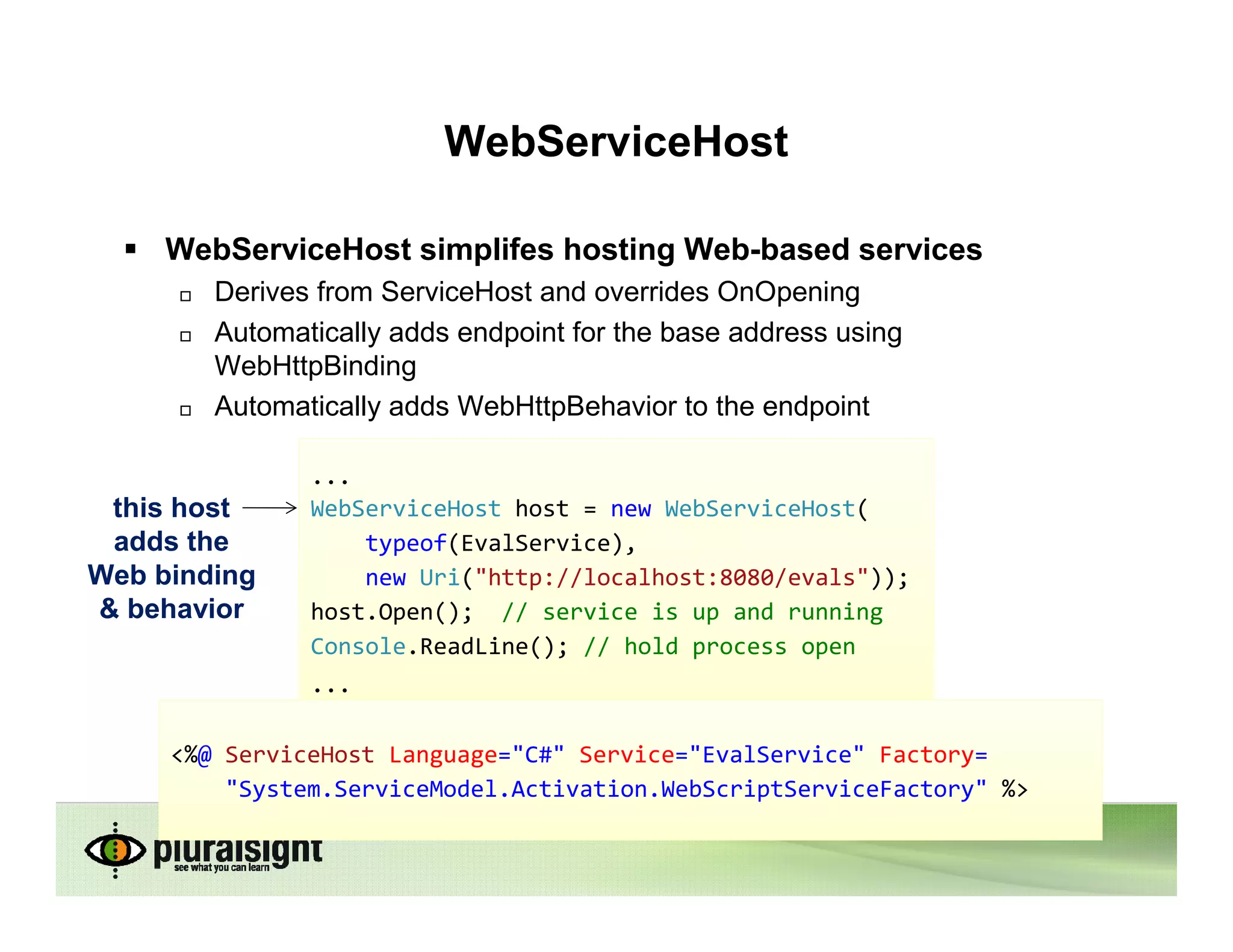
![WebGetAttribute
WebGetAttribute maps HTTP GET requests to a WCF method
Supply a UriTemplate to defining URI mapping
The UriTemplate variables map to method parameters by name
BodyStyle property controls bare vs. wrapped
Request/ResponseFormat control body format
URI template
[ServiceContract]
public interface IEvalService
{
[WebGet(UriTemplate="evals?name={name}&score={score}")]
[OperationContract]
List<Eval> GetEvals(string name, int score);
...](https://image.slidesharecdn.com/gids2011restinwcfaskonnardpluralsight-120311000028-phpapp01/75/Building-RESTful-Services-with-WCF-4-0-13-2048.jpg)
![WebInvokeAttribute
WebInvokeAttribute maps all other HTTP verbs to WCF
methods
Adds a Method property for specifying the verb (default is POST)
Allows mapping UriTemplate variables
Specify which
Body is deserialized into remaining parameter HTTP verb this
responds to
[ServiceContract]
public interface IEvals
{
[WebInvoke(UriTemplate ="/evals?name={name}",Method="PUT")]
[OperationContract]
void SubmitEval(string name, Eval eval /* body */);
...](https://image.slidesharecdn.com/gids2011restinwcfaskonnardpluralsight-120311000028-phpapp01/75/Building-RESTful-Services-with-WCF-4-0-14-2048.jpg)
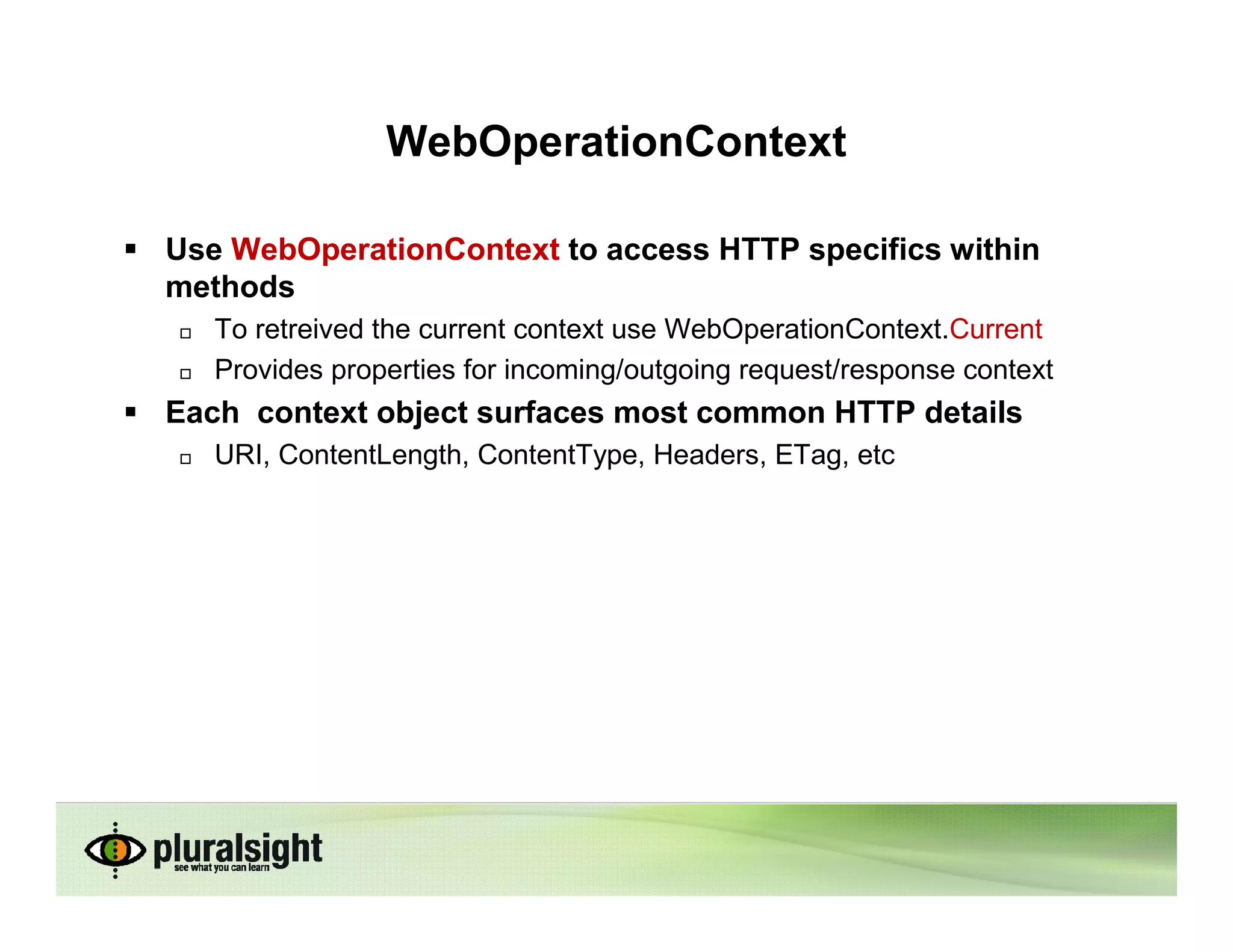
![WebMessageFormat
WCF provides support for two primary Web formats: XML &
JSON
You control the format via RequestFormat and ResponseFormat
[ServiceContract]
public interface IEvals
{
[WebGet(UriTemplate = "/evals?name={nameFilter}",
ResponseFormat = WebMessageFormat.Json)]
[OperationContract]
List<Eval> GetCurrentEvals(string nameFilter);
...
Specify the message format](https://image.slidesharecdn.com/gids2011restinwcfaskonnardpluralsight-120311000028-phpapp01/75/Building-RESTful-Services-with-WCF-4-0-16-2048.jpg)
![Syndication programming model
WCF comes with a simplified syndication programming model
The logical data model for a feed is SyndicationFeed
You can use it to produce/consume feeds in a variety of formats
You use a SyndicationFeedFormatter to work with a specific
format
Use Atom10FeedFormatter or RSS20FeedFormatter today
[ServiceKnownType(typeof(Atom10FeedFormatter))]
[ServiceKnownType(typeof(Rss20FeedFormatter))]
[ServiceContract]
public interface IEvalService {
[WebGet(UriTemplate = "evalsfeed")]
[OperationContract]
allows you to return
SyndicationFeedFormatter GetEvalsFeed();
an Atom or RSS feed ...
}](https://image.slidesharecdn.com/gids2011restinwcfaskonnardpluralsight-120311000028-phpapp01/75/Building-RESTful-Services-with-WCF-4-0-17-2048.jpg)
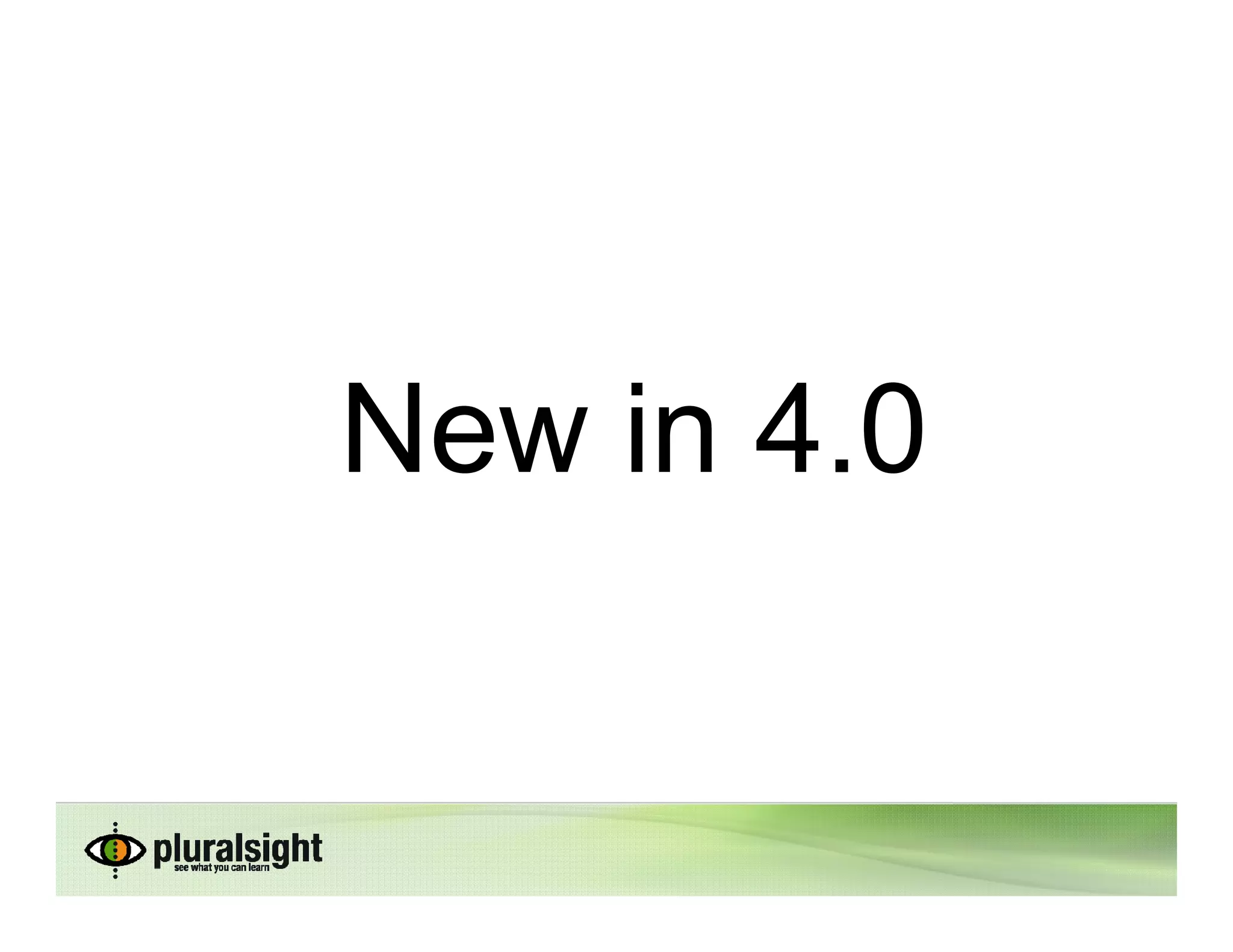
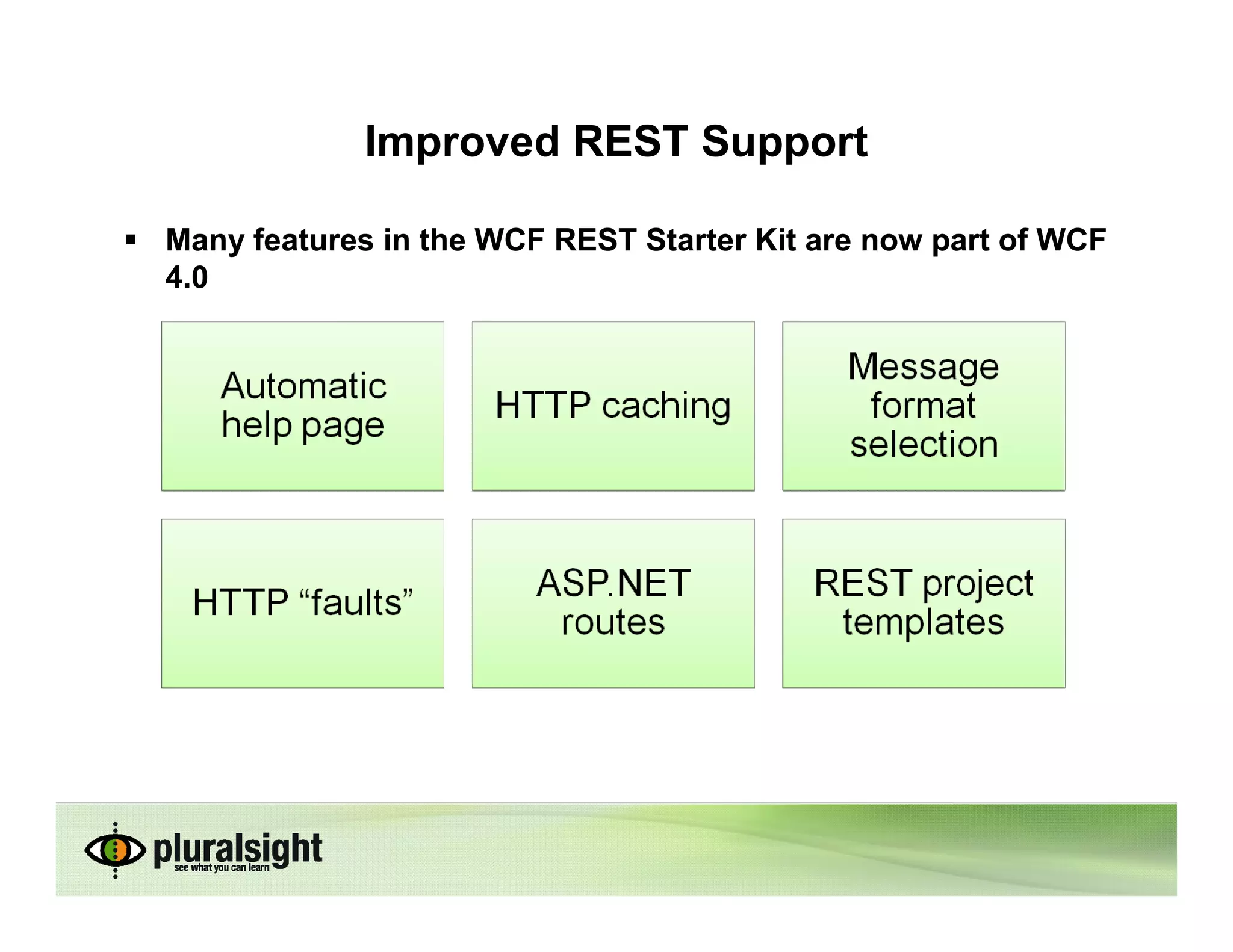
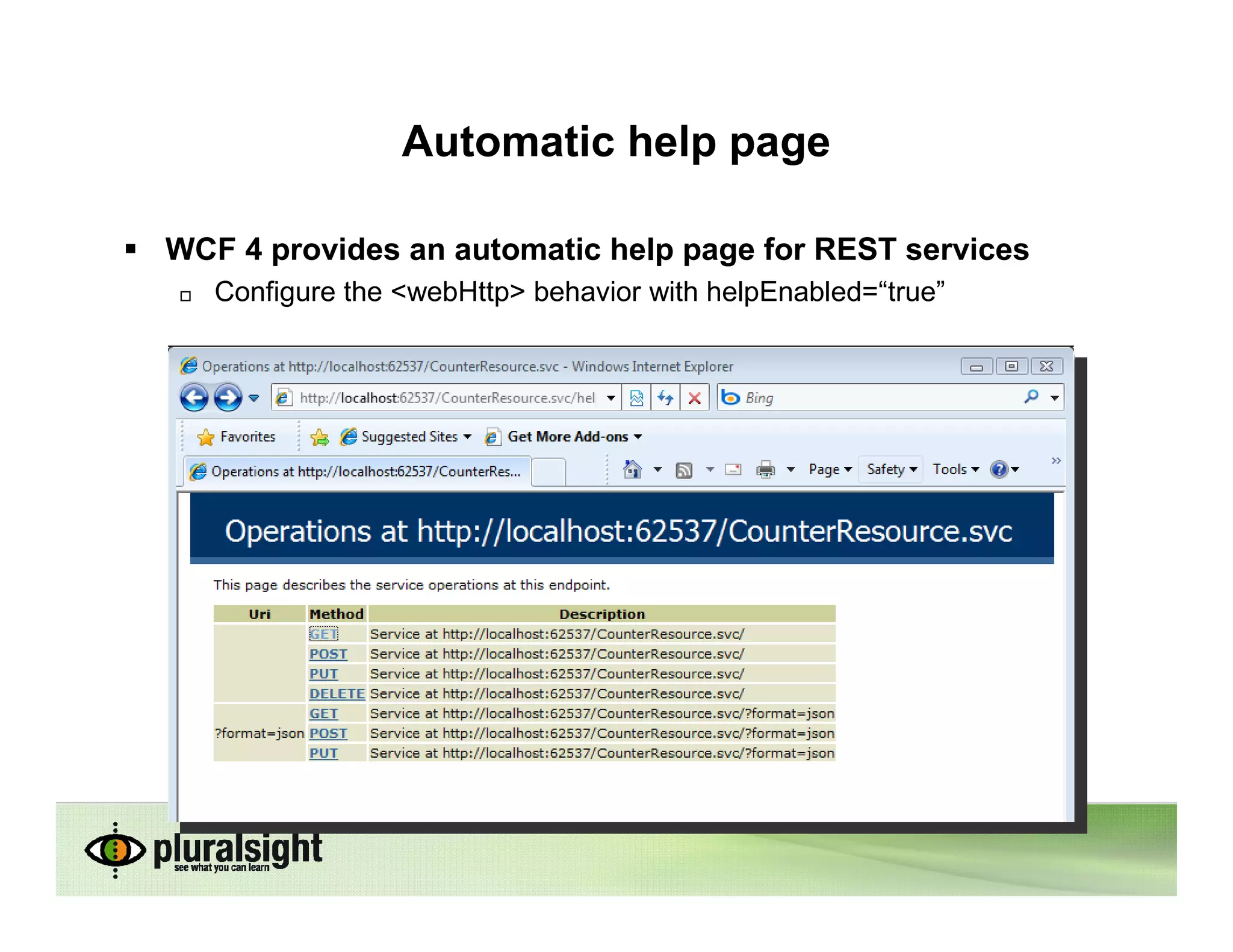
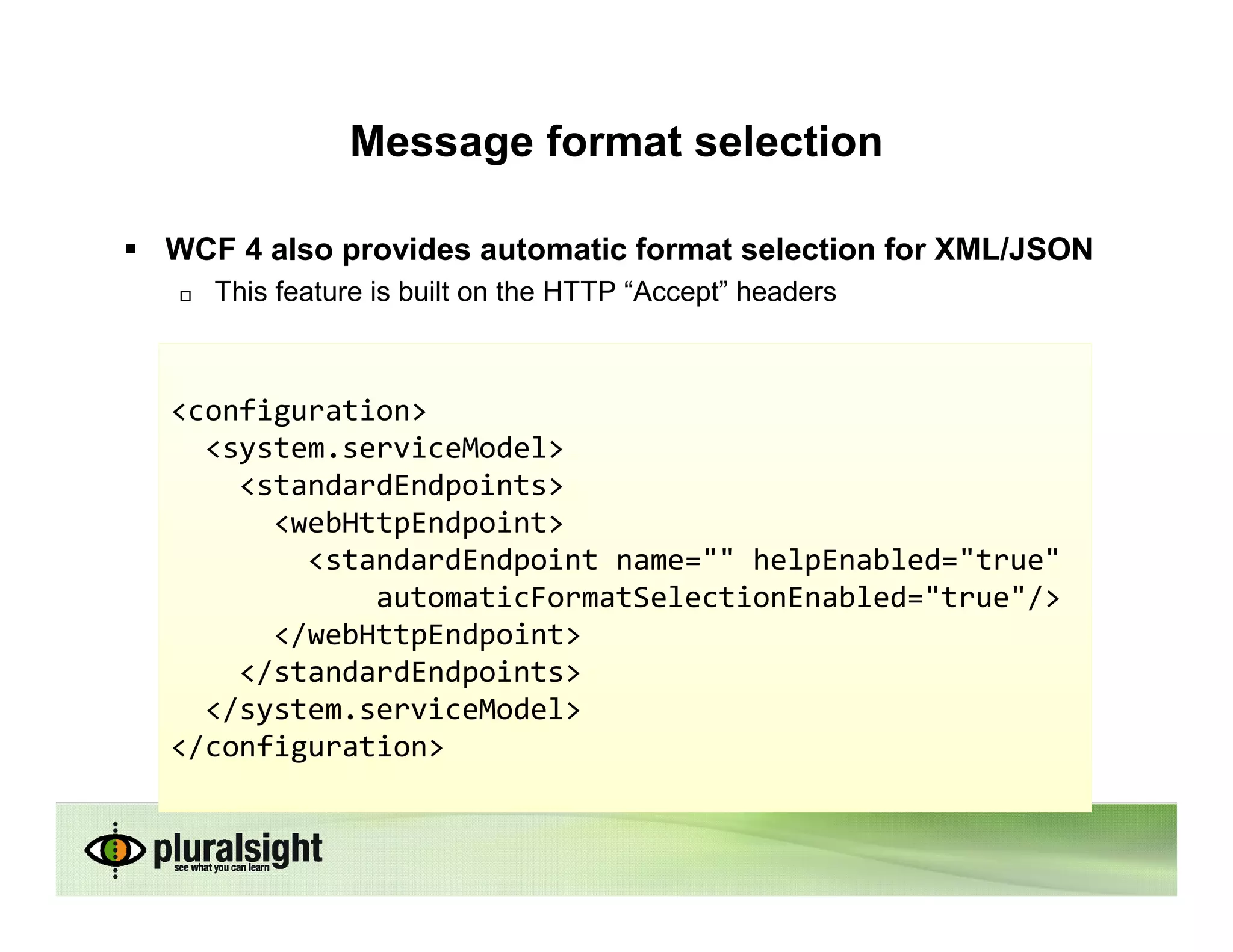
![Http caching support
WCF 4 provides a simpler model for managing HTTP caching
They built on the ASP.NET caching profile architecture
You define an [AspNetCacheProfile] for your GET operations
Shields you from dealing with HTTP caching headers yourself
[AspNetCacheProfile("CacheFor60Seconds")]
[WebGet(UriTemplate=XmlItemTemplate)]
[OperationContract]
public Counter GetItemInXml()
{
return HandleGet();
}](https://image.slidesharecdn.com/gids2011restinwcfaskonnardpluralsight-120311000028-phpapp01/75/Building-RESTful-Services-with-WCF-4-0-22-2048.jpg)
